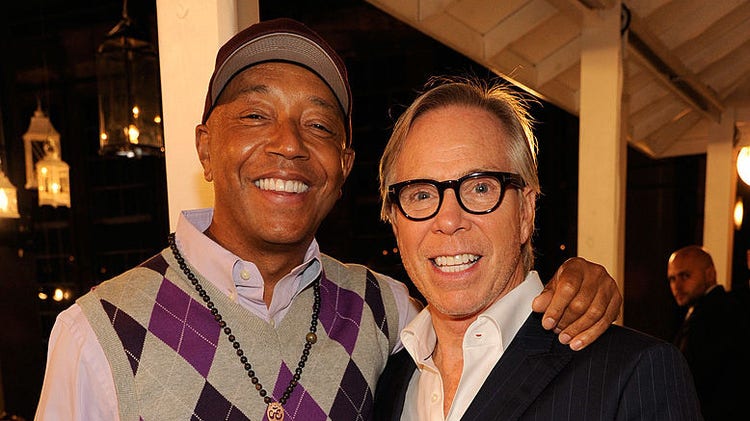
Tommy Hilfiger has Russell Simmons to thank for his popularity amongst the hip hop community throughout the 1990s.
Prior to luxury fashion houses becoming go-to status symbols of success, the who’s who of the culture could be seen in Hilfiger’s editorial campaigns and draped in the ready-to-wear attire. While his clothing line was already popular among the affluent crowd who could afford prep school tuition and family summer homes in Cape Cod, Nantucket and the Hamptons, it was not until hip hop embraced the Americana brand that it shot to newfound levels of popularity.
“It was actually Russell Simmons, who really is one of the godfathers of hip hop, who said to me that young street kids and rappers wanted to wear the clothes because they wanted to look rich,” Hilfiger said in a feature for The Guardian, which was published on Feb. 20 but has become a social talking point this weekend.
Simmons had already cornered his share of the streetwear apparel market when he launched Phat Farm in 1992. His then-wife, Kimora Lee Simmons, expanded the line to women with Baby Phat in 1999.
Hilfiger stated that the success he achieved following photoshoots with Aaliyah and Snoop Dogg established him as hip hop’s designer of choice, dethroning Ralph Lauren for a time and even dictating his approach to apparel. He said that the significance of sports inspired him to make large logos as demand for Tommy Hilfiger garments grew.
“They wanted everything way, way oversized because they were buying sizes that were way too large. And so I started just making oversized, and it was a perfect storm. I was dressing Puff Daddy for his tours. I was dressing Biggie Smalls. I was dressing Tupac,” he recalled.
Elsewhere in the interview, Hilfiger shut down the rumor that he appeared on “The Oprah Winfrey Show” in 1997 and stated that he hated the attraction his work garnered from hip hop culture and instead intended for his clothes to be worn by upper-class white people. “It was devastating that people would think that I would really think that way. And I think people who know me knew that it wasn’t true,” he said of the fabricated narrative.